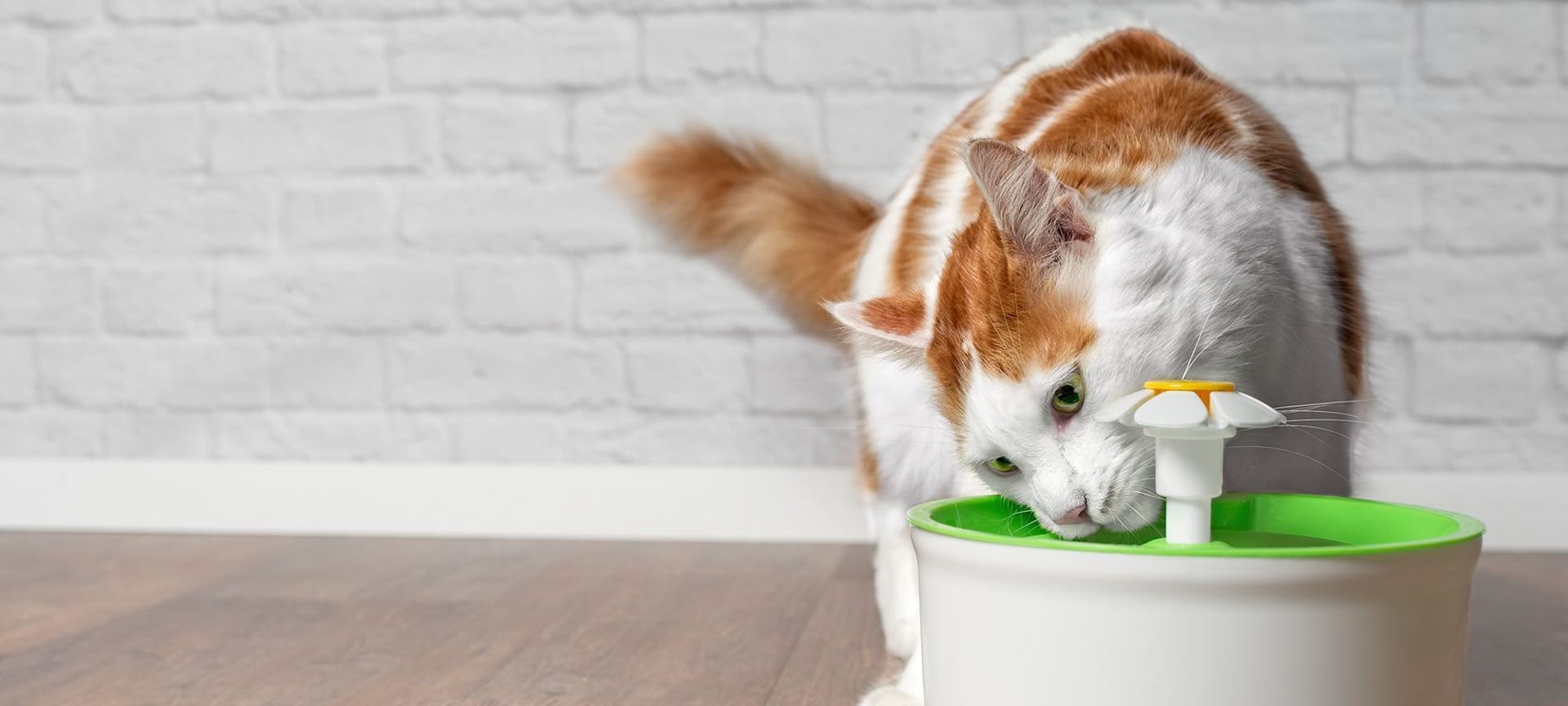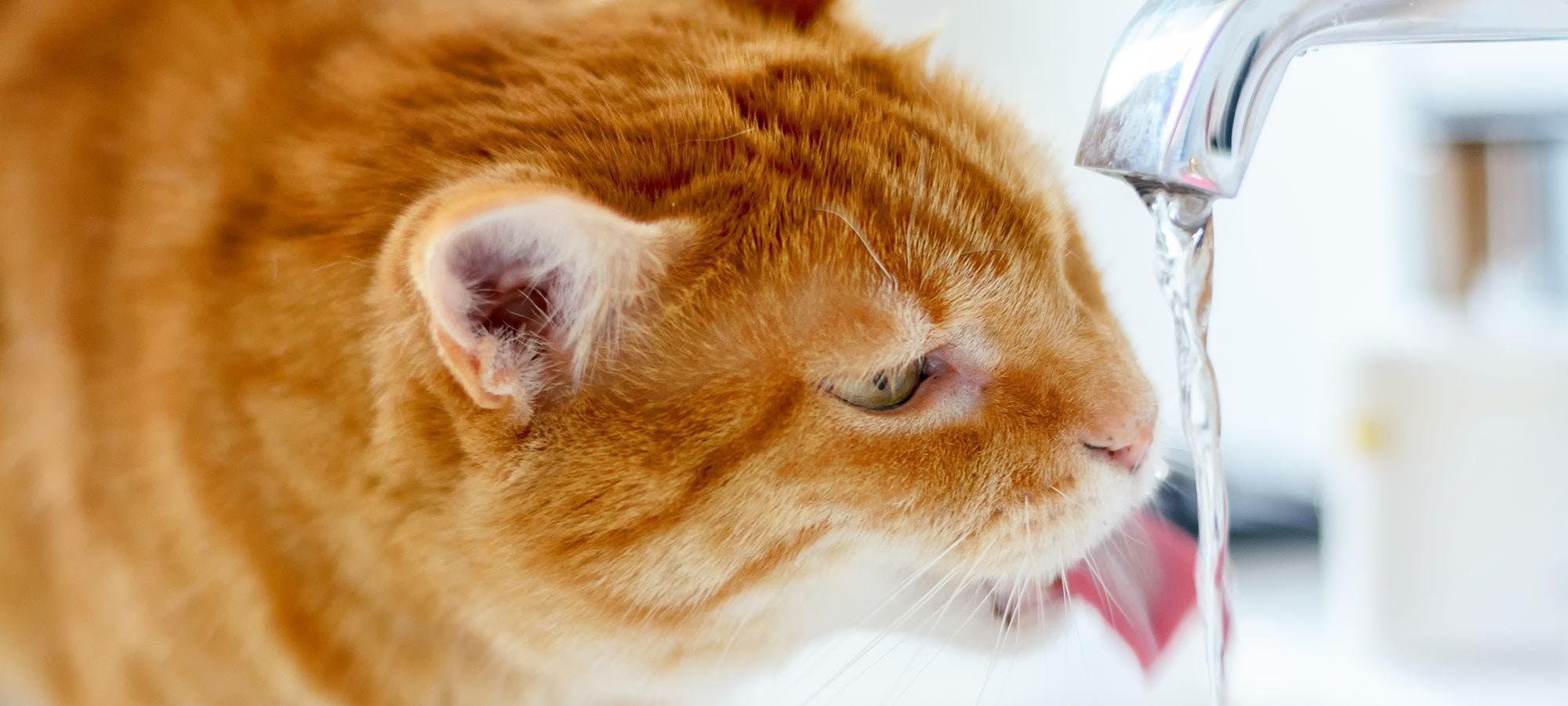
During the summer months, and all year round, it’s important to be aware of how much your cat is drinking – because unlike dogs, they can be a little fussier and less interested in drinking the water you’ve left out for them. So, if you’ve noticed your cat hasn’t touched their water in a while or is inconsistent with drinking water, make sure you do a little investigation – as lack of water, can often lead to cat dehydration.
The Signs and Symptoms
Sunken eyes
If your cat’s eyes appear sunken, hazy, or just not right, lack of water could be a contributing factor.
Depressed or flat behaviour
If you notice your cat’s behaviour alters from their usual routine, hiding away or not moving from their bed, this is definitely a significant reason to contact your vet. Observe their behaviour over a day or so, and if they do look lethargic and depressed, this may be linked to dehydration or other medical issues.
Dry tacky gums
Healthy cat gums are pink and moist; if your cat has dry and tacky (sticky) gums, this means your cat could be dehydrated.
Not eating
If your cat has lost their appetite for an extended period (24hrs with no interest in food), this is definitely a sign your cat is feeling unwell and can be linked to dehydration.
The skin tent test:
One common way to test if your cat is dehydrated is to perform a skin tent test. You should gently pull up the skin between their shoulders, and it should snap back pretty quickly. If the skin ‘tents’ and takes a while to pull back to the body, this is a sign of dehydration.
Note: Not all these symptoms are strictly attributed to cat dehydration, but they are common of a dehydrated cat. Always check with your local vet if your cat is displaying some of these signs or if you’re feeling concerned.
How much water should my cat be drinking?
Have you ever considered exactly how much water your cat should be drinking during the day? Normally, cats drink about 45ml per kilogram of their body weight per day. This can, however, vary day to day, and depends on their diet. If they eat more dry food than wet food, they will need more water. Many cats will be getting some hydration from their wet food.
In the wild, hydration and water is often consumed via the cat’s prey. Therefore, they may not feel they need anymore, and this can be the case if they are being fed wet and dry food – not just dry food.
Why isn’t my cat drinking water?

As we mentioned above, cats are very particular about their habits – and this includes drinking water. There are many reasons your cat might decide not to drink the water you left out, and some of them include:
The water bowl is sitting next to their food bowl – Many cats won’t drink out of their water bowl if it is placed next to their food bowl, this is because of their natural, wild instincts. Cats in the wild never drink the water near freshly killed prey, as it could be contaminated. Even though your cat is very much domesticated, their natural instincts may still influence their decision-making.
The water is stagnant – In the wild, cats like to drink from running water sources. You may have noticed this at home, where your cat tends to try and drink from your taps. It’s worth noting that there are water fountain products available that can provide this same experience for your cat.
The water bowl is not their style - Some cats just like what they like. And this includes the type of bowl you select for them. It is known that some cats are more akin to certain textures; some like to drink from plastic bowls, while others prefer ceramic or metal. Also, you may find your cat doesn’t like their whiskers touching the water, so you might need to provide a wide and shallow bowl. Unfortunately, you’ll just have figure out what your cat likes through trial and error.
The water is not cool – Most cats like to drink cool water, so be careful of where you place their water bowl in the home. Try and avoid placing their water bowl in direct sunlight and the heat. Adding ice blocks to the water is a great way to keep the water cool on warmer days.
The water is murky or dirty – Cats like clean water (sounds silly, but they’re very particular) – which is why they prefer running water. If the water is at all dirty, this might enough to steer them away. However, if you regularly clean and refill your cat’s bowl every couple of days, then the water should be clean enough to appeal to your cat.
Quick tips on preventing dehydration in cats
Keeping your cat hydrated is tricky, and it can’t be forced. However, there are some measures you can put in place to make sure you’re providing your cat with the best possible scenario.
- Consider having multiple water bowls in different areas of the home. Providing a selection of different bowls will provide a fussy cat many options with access to water.
- Rinse and wash your cat’s bowl regularly to ensure your cat doesn’t feel ‘turned off’ by stagnant or dirty water.
- Consider adding wet food to your cat’s diet, as wet food contains much higher water content and can account for some of your cat’s daily water intake.
- Buy a drinking fountain or add ice blocks to your cat’s water, for a more enticing option.
Determining if your cat is drinking enough water every day can be difficult. However, by following the above steps and seeking veterinary advice when necessary, you can be more comfortable knowing your cat will have the best chance of staying hydrated and happy.